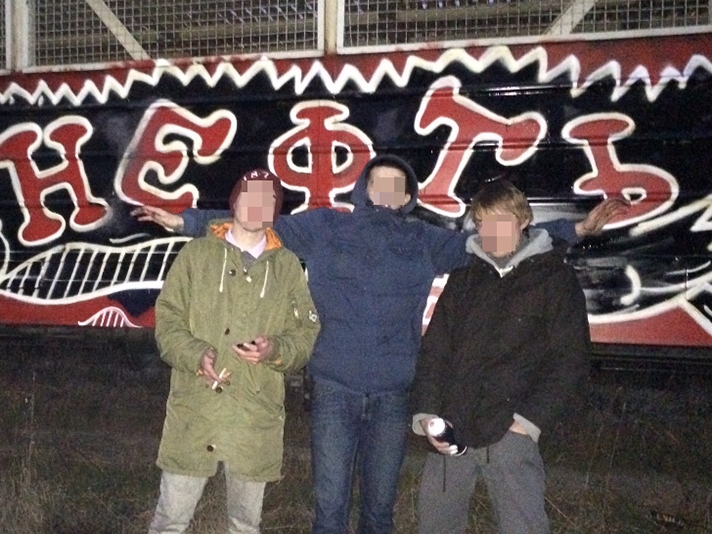Capturing the Essence of China's Rust Belt: A Photographer's Journey Home

In recent years, China's Northeast region, historically known as Manchuria, has been experiencing a cultural resurgence dubbed the "Dongbei Renaissance." This movement, characterized by a newfound appreciation for the region's unique history and cultural heritage, has been spearheaded by a new generation of artists and writers, including photographer Wang Wei.
Wang Wei's journey began as an oilfield worker, a path shared by his parents, friends, and relatives. In Chinese culture, this is known as being "within the system" and having an "iron rice bowl," a term that refers to a stable and secure job within a state-owned enterprise. However, during this period, Wang Wei also cultivated a parallel career as a photographer, immersing himself in the vibrant underground music and street culture scenes that thrived outside of his work life.
After leaving his hometown to seek better opportunities in Shanghai, Wang Wei found himself drawn back to the place that had shaped him. Armed with a camera, he set out to document the land that held such a profound place in his heart, reconnecting with childhood friends and former colleagues from the factory where he once worked.
The Northeast, which encompasses the provinces of Liaoning, Jilin, and Heilongjiang, as well as parts of Inner Mongolia, has a rich industrial history. It was one of the earliest regions to industrialize in China during the era of Manchukuo and was once hailed as "the Republic's eldest son." (共和国长子) after the founding of the People’s Republic of China. The region's economy was traditionally based on heavy industry, with a focus on equipment manufacturing, steel, automobiles, shipbuilding, aircraft manufacturing, and petroleum refining.
However, in recent decades, the Northeast has faced significant challenges. The stagnation of its heavy-industry-based economy, coupled with the liberalization and privatization of China's economy, has led to widespread layoffs and economic hardship. This period of upheaval, which took place in the 1990s and early 2000s, left an indelible mark on the region and its people.
Despite these challenges, the Northeast has remained a source of inspiration for artists and writers. The "Dongbei Renaissance" movement has brought the region's culture and art into the spotlight, with novels, films, and TV shows exploring the unique experiences and struggles of its people. At the core of this movement is a longing for dignity, stability, and the right to lead an ordinary life – themes that resonate with millions of young Chinese facing economic uncertainty.
For Wang Wei, returning to his hometown every year during Chinese New Year was a chance to rediscover the place that had once been so familiar. Through his lens, he sought to capture the essence of life in a small oil town, a microcosm of the many industrial cities that dot the region's vast terrain. The once-familiar surroundings now felt both foreign and intimately recognizable, a testament to the changes that had taken place in his absence.
As China continues to grapple with economic headwinds and societal shifts, the "Dongbei Renaissance" serves as a reminder of the resilience and creativity of its people. Through the work of artists like Wang Wei, the region's stories and struggles are given a voice, resonating with a new generation of Chinese youth seeking to understand their place in a rapidly changing world.
INTERVIEW
JY:
In your long running series, Saertu, you tend to focus a lot on the architecture (Oil fields) and working class communities or personas, can you briefly introduce the project and reason why you focus on this specific field, and how it inspired the project or process of creating these. 在你的长期系列作品《萨尔图》中,你经常把关注点放在建筑,油田,和工人阶级社区或人物角色上。您能否简要介绍一下该项目以及你对这一特定主题的关注原因,以及它是如何启发你创作这些作品的过程。
WW:
我来自一个父母工作都是油田系统的家庭,从小生活在采油厂的厂区里,伴随着工厂、抽油机、五层的赫鲁晓夫家属楼及外围丰茂的草原长大。
2012—2017年,我在“大庆油田第十采油厂”工作过。用中国特色的说法叫做“体制内”、“铁饭碗”。我经历过五年这样的时光。在那个时期,工作之余,我也同时开展摄影师的职业生涯,并且工作之外的生活都是混迹在那几年的地下音乐和街头文化的场景里。
2016年左右逐渐地开始脱离国企的稳定工作,选择离开东北,来到上海做一名职业的摄影师。在这个时间段前后,我开始有意地去拍摄油田相关的一些作品。包括并不限于人像、建筑及景物。把他们集合起来,用大庆市萨尔图区为名,集成了摄影系列《萨尔图》。
由于我常年工作和生活已经脱离了东北与油田,所以每次只有短暂地回家过春节期间才有机会拍这个主题。所以每一次的拍摄,都会带有阶段性的一些新知和感受。逐年地铺满和丰富整个叙事。
I come from a family where my parents work in the oil field. I grew up near an oil production plant, surrounded by factories, pumping units, five-story Khrushchevka-style buildings, and lush grasslands.
From 2012 to 2017, I worked at the "Tenth Oil Production Plant of Daqing Oilfield." In Chinese culture, this is referred to as being "within the system" and having an "iron rice bowl." I experienced this for five years. During that period, after work, I also developed a career as a photographer, and my life outside of work was immersed in the underground music and street culture scenes of those years.
Around 2016, I gradually began to leave my stable job in a state-owned enterprise and chose to leave the Northeast to come to Shanghai to work as a professional photographer. Around this time, I intentionally started shooting some works related to the oil field, including but not limited to portraits, buildings, and scenery. These works were gathered together, and the photography series "Saertu" was created, named after Daqing City's Saertu District.
Since my work and life have been separated from the Northeast and the oil fields all year round, I only have the opportunity to take pictures of this theme when I briefly go home for the Chinese New Year. Therefore, each shooting experience brings with it some new knowledge and feelings. The entire narrative is paved and enriched year by year.
JY:
We’ve seen a lot of conversations around “Dongbei Renaissance” in recent years, and I believe you are originally from Dongbei, Daqing, as a native 东北人, what do you feel about this, and can you identify Dongbei Renaissance based on your understanding and perspective. 这几年我们经常听到关于“东北文艺复兴”的讨论,作为一个土生土长的东北人,你对此有何感想?是否认同“东北文艺复兴”的概念?以及你对此的想法?
WW:
每次在互联网上看到大家对东北感兴趣、关注东北我都非常高兴。因为东北的历史和文化博大精深,某种程度上对当代的中国乃至整个东北亚都有深远的影响。他不应该埋没在偏见和固有认知当中。有很多东西值得被看见和讨论。在大众层面看来是这些年东北频繁出现在互联网和荧幕上,好像逛市集突然逛到了这个摊位,觉得很新鲜,然后会和一些断代史相结合,认为东北又“复兴”了。其实东北作为最早进入工业化现代社会的中国地区之一,他一直在孕育和积累,我在《萨尔图》这个摄影项目中,也有受到一些东北艺术家的影响,我们也是站在前辈的肩膀上前进。现在东北有机会重新回到大家的视野中,是这股合力长期积累的阶段性结果,而文化和艺术以及一个地区精神风貌的传承,还是要在历史当中去评判。
I am delighted every time I see people on the Internet expressing interest in and paying attention to Northeast China. The history and culture of Northeast China are extensive and profound, having a significant impact on contemporary China and, to some extent, even Northeast Asia. This rich heritage should not be buried under prejudices and stereotypes. There is much that deserves to be seen and discussed. From a public perspective, the Northeast has frequently appeared on the Internet and screens in recent years. It's like walking into a market and suddenly visiting a stall; it feels very fresh. When combined with some chronological history, it is believed that the Northeast has been "revived" once again.
In fact, Northeast China, as one of the earliest Chinese regions to enter industrialized modern society, has been nurturing and accumulating talent and culture for years. In the photography project "Saertu," I was also influenced by some Northeast artists. We are standing on the shoulders of our predecessors and moving forward. Now that the Northeast has the opportunity to return to everyone's field of vision, it is a phased result of the long-term accumulation of this joint effort. However, the inheritance of a region's culture, art, and spiritual outlook still has to be judged in the context of history.
JY:
What’s the next step you envision for the project Saertu? What other things that you are planning to document? 你对《萨尔图》系列之后有什么其他的规划或者想法?还有计划记录哪些其他物件人物主题呢?
WW:
《萨尔图》这个项目到今年已经拍了第七个年头,我目前还没有非要在某个时间节点达到什么目标这个想法,可能就随遇而安,哪天不想拍了就把它停掉,没拍烦就接着拍。可能拍一拍前几年拍过的人,看看他们现在都怎么样了。也可能接下来做一些声音上的尝试,可能会解构一些采样、做一些拼贴,或者是视频上的一些拓展。我还是会对北方的一些特质很敏感,每次回到这样的场景里都会和东北以外的世界构成回路,给我很多新的灵感和动力。我回到上海后也总是会有一种崭新的状态来面对接下来的生活和工作。
The "Saertu" project has been ongoing for seven years now. I don't have a specific goal or timeline in mind for its completion. I may just go with the flow and stop filming when I no longer feel the desire to continue. If I grow tired of shooting, I'll keep pushing forward. Perhaps I'll take a picture of someone I photographed in previous years and see how they are doing now. We may also experiment with incorporating sound in the future, possibly deconstructing some samples, creating collages, or expanding into video. I remain very sensitive to certain characteristics of the north. Every time I return to such a scene, I form a connection with the world outside the Northeast, which provides me with a wealth of new inspiration and motivation. After I return to Shanghai, I always find myself in a refreshed state, ready to face the next chapter of life and work.
JY:
Beside documenting your hometown and the culture behind it, what else interest you, music? Movies? Books? Would you be able to also talk about how did your hometown inspire you in other aspects in your life? 除了记录家乡和其背后的文化,你还对哪些方面感兴趣?音乐?电影?图书?能谈谈你的家乡在其他生活方面是如何启发,或者给你带来灵感的?
WW:
在2000年前后的东北,总是弥漫着企业转型、工人下岗、社会动荡这些气氛。不过那是大庆油田最辉煌的20年,是我的童年和少年时代,也由于互联网的普及,让我很小的时候就接触了先锋的青年文化。我的整个少年时代是被摇滚乐和街头服饰以及时尚杂志所填满的。我的某些创作思路也是来源于那个时期产生的一些经验惯性。
我喜欢看历史,在《萨尔图》的项目中,运用了很多时尚片的拍摄手法,尝试着用现代的眼光看待历史。在我刚刚参加工作那几年总是有一种对抗的情绪,对抗一些所谓的不公平和腐朽的人和事。但在后来的实践中慢慢达到了和解。
我时常想《萨尔图》这个项目不仅仅是摄影作品,其本身也可以作为一种方法,把这样的模型套用在其他的事情上,尝试着用自己的方式去建立一套新的出口,在既成的基础上进行再创造。
In the Northeast region around the year 2000, there was a pervasive atmosphere of economic transformation, laid-off workers, and social unrest. However, those years marked the most glorious two decades of Daqing Oilfield, coinciding with my childhood and adolescence.
Thanks to the growing popularity of the Internet, I was exposed to pioneering youth culture at a very young age. My teenage years were filled with rock music, streetwear, and fashion magazines. Some of my creative ideas stem from the experiences.
I have a keen interest in history. In the "Saertu" series, I employed numerous fashion film shooting techniques to examine history from a modern perspective. During the initial years of my career, I often felt a sense of confrontation against certain individuals and practices that I perceived as unfair and decadent. However, as my work progressed, I gradually achieved a sense of reconciliation.
I often reflect on the idea that the "Saertu" is not merely a photographic project; it can also serve as a method to apply this model to other endeavors and attempt to create a new set of outlets in my own way. It's about recreating and building upon what has already been established.
Author: JY

















